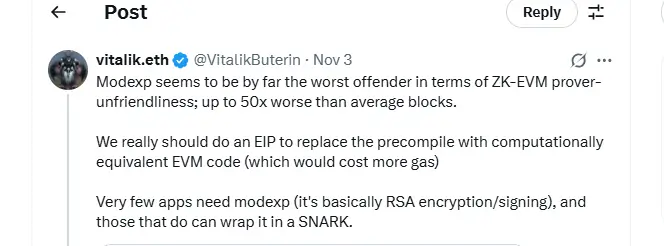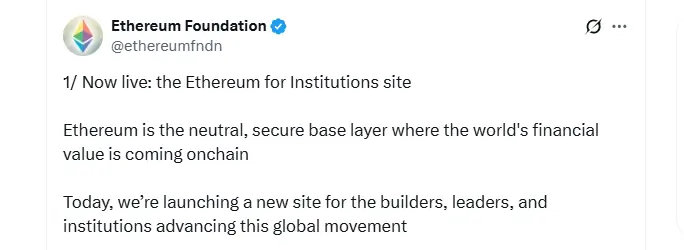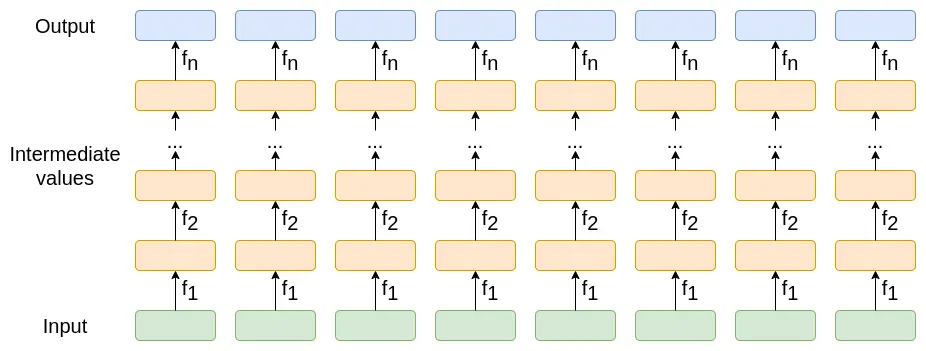
- Vitalik proposes merging ZK proofs with FHE, MPC, and TEE to enhance blockchain security.
- Ethereum’s modexp bottleneck limits proof speed; Vitalik calls for bytecode replacement.
- GKR’s cryptographic method verifies data 10x faster, cutting costs and enhancing privacy.
Ethereum co-founder Vitalik Buterin is calling for a new mix of cryptographic methods to strengthen how blockchains protect information. In a series of posts on X, he argued that zero-knowledge (ZK) proofs work best when combined with other privacy-oriented tools such as multi-party computation (MPC), fully homomorphic encryption (FHE), and trusted execution environments (TEE).
By doing so, blockchains could gain protection against data leaks, coercion, and other privacy risks that single technologies struggle to prevent on their own. Voting systems were at the heart of his argument.
Buterin pointed out that while ZK proofs protect voter anonymity, they cannot by themselves stop coercion or vote buying. Integrating them with MPC or TEE, he explained, ensures both privacy and integrity in decentralized decision-making.
“For voting, ZK does not offer coercion resistance, you do need {trusted party | MPC | FHE | TEE} for that. But what you *can* do is layer ZK and, eg. FHE together, so that even if the FHE breaks, you still have every property except coercion resistance due to the ZK,” he said in a thread on X.
This layered architecture would shield blockchains from weaknesses that arise when any single cryptographic method fails, allowing security to remain intact even under partial compromise.
Vitalik: The Modexp Bottleneck Slowing Ethereum’s ZK Evolution
Buterin didn’t stop at theory. He also turned the spotlight on one of Ethereum’s long-standing technical issues: the modular exponentiation precompile, known as modexp. Ironically, he helped design it years ago. Today, that same feature stands as a barrier to efficient ZK proof generation.
“As the original inventor of the modexp precompile, I bow my head in shame. But modexp really does hold Ethereum back so much,” Vitalik noted.
The modexp function, used in RSA encryption and certain digital signatures, can make proof generation up to fifty times slower than a normal block. These delays ripple through rollups and layer-2 systems that depend on rapid cryptographic validation.
He now favors replacing it with standard EVM bytecode. Gas costs would rise a bit, but proof creation would become far easier to handle. Only a tiny fraction of Ethereum users rely on modexp, so the tradeoff leans toward scalability over backward compatibility.
Vitalik Buterin’s View on Ethereum’s Modexp (Source: X)
However, for applications that still need the operation, he suggested shifting to SNARKs, a proof framework that achieves similar cryptographic results without such heavy computation. The change, he acknowledged, would remove one of the biggest inefficiencies slowing Ethereum’s ZK proof ecosystem.
Institutions Step In as Privacy Technology Reaches Maturity
Ethereum’s steady progress in privacy technology is beginning to resonate beyond crypto circles. For instance, the Ethereum Foundation’s “Ethereum for Institutions” initiative, launched in late October, aims to bridge enterprise needs with blockchain infrastructure built on ZK proofs, FHE, and TEE.
Ethereum Launches the Ethereum for Institutions Site (Source: X)
This framework gives corporations and financial entities a pathway to deploy privacy-preserving solutions that meet compliance requirements. Projects such as Chainlink, Aztec Network, and Zama are already creating smart contracts that safeguard internal data while keeping essential records verifiable on-chain.
However, Ethereum remains the dominant network for tokenized real-world assets, holding over 75% of that market and around 60% of all stablecoins in circulation. Firms like BlackRock, Securitize, and Ondo Finance now use Ethereum to issue digital securities that combine transparency, auditability, and immediate settlement.
Besides, layer-2 ecosystems, including Base, Scroll, and Unichain, collectively manage over $50 billion in locked value, providing a high-speed foundation for global-scale applications that rely on ZK proof infrastructure.
Privacy Efforts Deepen Under Ethereum’s Expanding Research Network
In October, the Ethereum Foundation formed its Privacy Cluster, a 47-member group coordinated by Igor Barinov of Blockscout. The cluster’s mission focuses on improving private data verification, resisting surveillance, and enabling selective identity disclosure.
This cluster evolves from the Privacy and Scaling Explorations team, rebranded as the Privacy Stewards for Ethereum to emphasize real-world deployment over theory. It complements Buterin’s ongoing work on faster proof systems such as GKR, a protocol that verifies computations roughly ten times faster than older methods.
GK Tutorial (Source: Vitalik Buterin’s Website)
On consumer hardware, GKR can process about two million operations per second while maintaining full ZK integrity. This innovation reduces costs and increases privacy, paving the way for a faster, leaner, and more secure Ethereum ecosystem.
As Buterin continues fine-tuning proof systems and eliminating outdated code, Ethereum edges closer to becoming a network defined by both transparency and confidentiality, a balance few blockchains have achieved.















